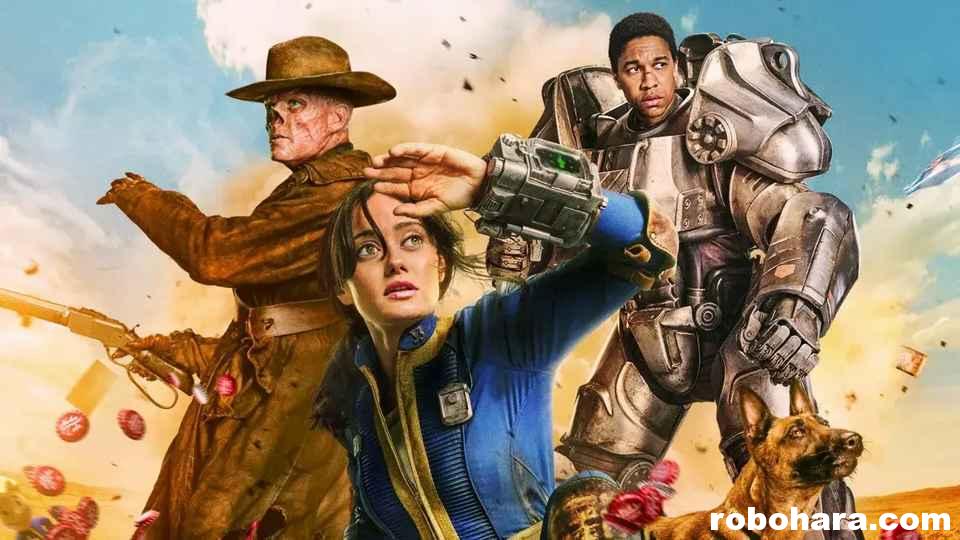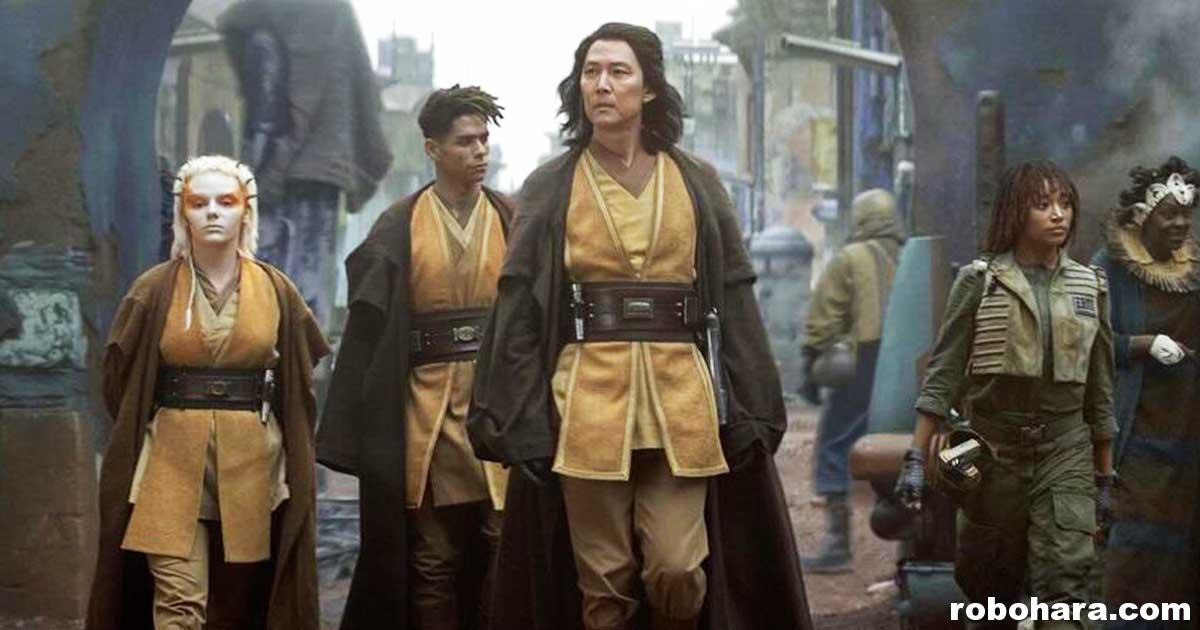
Over the past few weeks I’ve binged the first season of two shows: Fallout, loosely based on the video game of the same name, and The Acolyte, the latest live action Star Wars series. The first season of Fallout, which aired on Amazon Prime, had an estimated budged of $150 million, while The Acolyte had a budget of roughly $180 million. Fallout currently has a 90% audience approval rating on Rotten Tomatoes while The Acolyte has an abysmal 31% approval rating. What did Fallout do so right that The Acolyte failed out? A lot, actually.
In science fiction stories authors create fantastic worlds that can have any rules they dream up, but one of the most important things is that once those rules are established, they are consistent. It’s perfectly acceptable for an author to establishes a world where aliens can breathe underwater… but if one of those aliens later drowns it has to be explained to readers or viewers why. These types of stories have to stick to the rules they’ve created, otherwise the audience may feel confused, cheated, or frustrated when the rules change.
Fallout does a great job of this. Its post-apocalyptic setting is established early on. Groups of people known as “vault dwellers” avoided the effects of a nuclear war by living in underground bunkers, while the land above (the “wasteland”) has become a dangerous place full of fiends and ghouls who suffer from radiation (and worse). The season’s overarching plot involves a vault dweller named Lucy who must emerge from her vault and face adversity to rescue her kidnapped father. In the first episode we are introduced to two more major characters, Maximus (a squire serving in the militaristic Brotherhood) and “The Ghoul,” an undead gunslinger who crosses paths with both Lucy and Maximus and is after the same thing (which just so happens to be, quite literally, someone else’s head). Throughout the season the show uses flashbacks to flesh out the backstories of these characters. By the end of the season a lot of what viewers thought they knew was wrong, but everything fits together nicely.
The Acolyte tries to do many of these same things and, ironically, fails at most of them. The Acolyte tells the story of Force-sensitive identical twins, Osha and Mae, who were being raised by a coven of witches. A group of four Jedi arrive on the planet, stumble across the twins, and ultimately are involved in a deadly conflict with the witches. As a result of the conflict the witches are killed and the twins are separated, leaving each one to believe they were the sole survivor. One of the twins, Osha, leaves with the Jedi and attempts to become one herself only to fail. The other twin, Mae, spends the next fifteen years training under a Sith Lord with the intent of murdering the four Jedi who visited her planet as a child. So far, so good.
One of the biggest problems with The Acolyte is that it takes place in a world that has already been established. The rules of the Star Wars universe were firmly established back in 1977 although, god love ’em, they’ve been fiddling with them ever since. In the original trilogy it was established what Jedi could (and couldn’t) do through the means of the Force, but new Jedi powers keep appearing. In this series, the Sith Lord referred to as “The Stranger” is able to perform a “mind wipe,” in which he is able to make characters permanently forget about the existence of other characters, and even wipe decades of memories from their minds. That’s new! The Shadow also wears a helmet made of “cortosis,” a metal that shorts out lightsabers when they come in contact with it and repels the Force from penetrating it. Neat. But where was this metal in every other Star Wars film? Why doesn’t The Stranger wear an entire suit of armor made from the stuff? Or wrap his fortress in it? Why can’t the Force penetrate the helmet through the eye slits we’re shown?

Another thing both series have in common is the use of flashbacks. In Fallout, flashbacks are used to give backstories to the characters and explain to viewers how we got to where we are. In the main timeline we know there’s been a nuclear incent of some kind, but later, through flashbacks, we learn who was behind it. We learn each of the characters’ backstories, and ultimately, their motivations.
Again, The Acolyte does this completely wrong. The next to last episode of the season is a flashback to events that has already been explained and in many cases shown to views. One of the biggest complaints about 2018’s Solo: A Star Wars Story was that it retold events that viewers already knew about. In 1977’s Star Wars, Han Solo bragged about making the Kessel Run in “less than 12 parsecs.” In Solo… we watch Han make the Kessel Run in less than 12 parsecs. But, like, great — we already knew he could, because he already did. We also see him win the Millennium Falcon from Lando, a fact that was established in 1980’s The Empire Strikes Back. If you told viewers it happened, you don’t need to go back and show us it happened, too. The Acolyte revisits entire scenes for the sake of showing us that Jedi was hiding behind a tree the entire time. It feels a bit like
Finally, we have the characters themselves. While characters in a story should not be one-dimensional, they should have clearly established traits and morals and stick to them; and, if they don’t, those decisions should be justified. Fallout’s Lucy is a vault dweller who’s been raised on the Golden Rule. When forced to shoot, she’ll shoot, but she complains about being kidnapped and tortured by saying “that’s not nice!” The Ghoul, on the other hand, is on a mission. He’s unwavering from it and merciless, almost like The Terminator. When we find out why, it all makes sense. Maximus is a military grunt who dreams of earning a coveted position as a squire so that someday he might earn an even more coveted position as a knight. He was rescued by a knight as a child and wants to become one — end of story. That doesn’t meant that the character has to be simple, but it means his motivations are. Maximus’s story arc is about become a knight. Period.

In The Acolyte we have four Jedi who have been covering up an event and lying to the Jedi Council about it for 15 years. It was a death that, at best was a Jedi defending himself and maaaybe swinging his saber a fraction of a second too early, and at worse was an accident. I mean, this is Star Wars. Luke destroyed the Death Star which, according to the book, had nearly two million people on board. Two million! Obi-Wan killed a guy in a cantina and cut off another guy’s arm. Where was that mind wipe stuff then? Star Wars was a rough universe that often put characters in kill-or-be-killed situations. Worse than all of that, the show makes the Jedi look like a bunch of bumbling doofs. They can’t solve a murder, half of them are getting murdered by an angsty teen, another Jedi — who had nothing to do with the original witch attack, he just happened to be there — feels so guilty about the whole affair that he’s talked into killing himself rather easily. It just goes on and on. These aren’t the rantings of an old man saying “the Jedi aren’t acting the way I want them to” — these are the rantings of an old man saying, “the Jedi aren’t acting like they do in every other movie.” Somebody, Force mind wipe me!
Throughout its first season, Fallout told a complete story. We got a beginning, a middle, and an end of a story arc with lots of little stories throughout the season. At the end of the season, our characters are off on their next adventure. If the next season comes to fruition I’ll watch it and if it doesn’t, I feel satisfied with how the story ended. In the same amount of episodes, The Acolyte left viewers with more questions than answers. By the end of the season, one of the good guys has turned bad, one of the bad guys has amnesia, the ultimate bad guy has escaped, we learn there’s an even badder bad guy, and the events of this episode are covered up just like the previous events were, for reasons unknown. Bah.
Amazon has announced that Fallout has been renewed for a second season. I look forward to watching it. There has been no word as to whether there will be a second season of The Acolyte or not. These new Star Wars shows are being created for people younger than me BY people younger than me, and if they do end up making another season of that show, I’ll try and let them enjoy it while I go watch something else.
